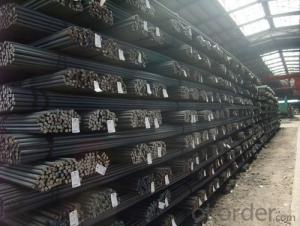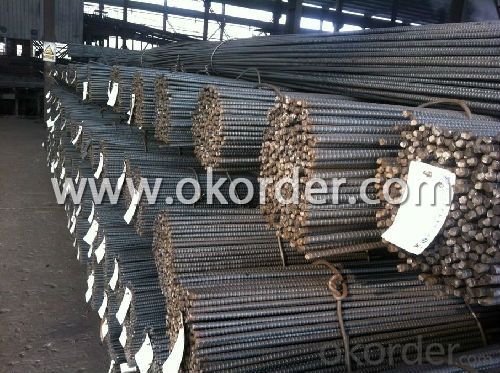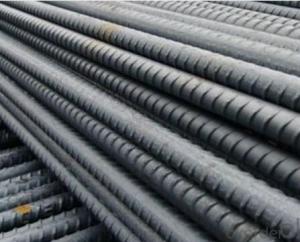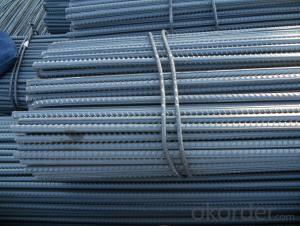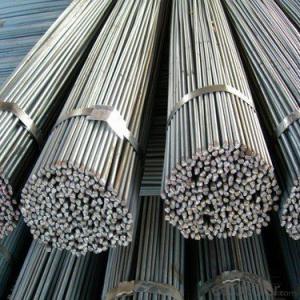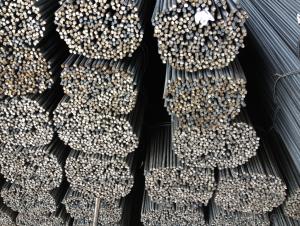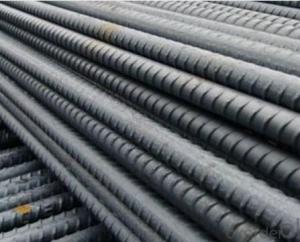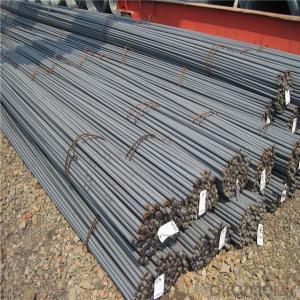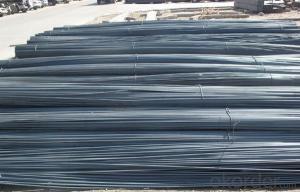EN STANDARD HIGH QUALITY HOT ROLLED REBAR
- Loading Port:
- Tianjin
- Payment Terms:
- TT OR LC
- Min Order Qty:
- 50 m.t.
- Supply Capability:
- 100000 m.t./month
OKorder Service Pledge
OKorder Financial Service
You Might Also Like
Product Description:
Appearance: Black
Technique: Slitting hot rolled steel coil
Grade: Q235, Q195,A36 SS400 S235jr.St37-2
Standard: AISI,GB,DIN,ASTM,EN,JIS
Length: 6m, 9m, 12m or as your requirement.
Width: 10mm-1010mm
Thickness: 1.5mm-20mm
Business type: big manufacture
Place of origin: Tianjin China (Mainland)
Packaging Details: In bundles for exporting and sea worthy
Delivery Detail: Within 15-35 days after receiving L/C or deposite T/T
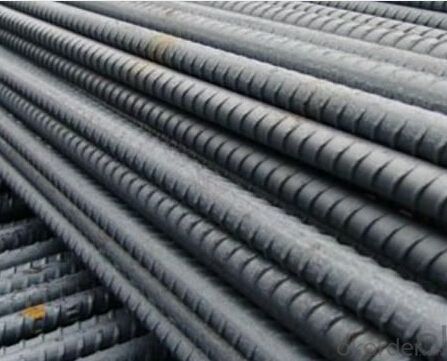
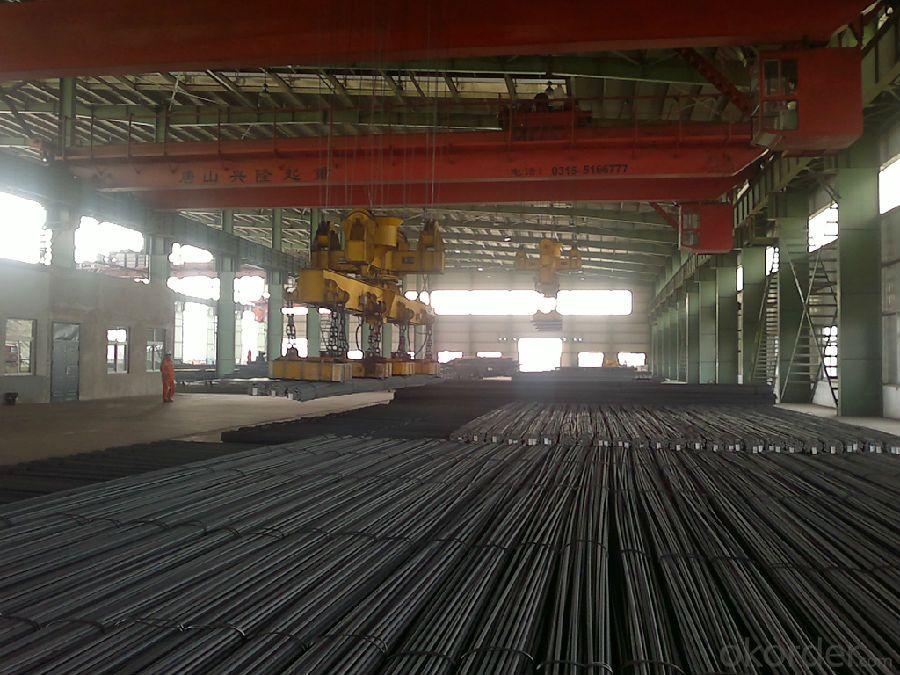
General specification as below:
Flat Bar Specification | |||
Width (mm) | Thickness (mm) | Length (m) | Theoretical Weight (kg/m) |
20 | 2.0 | 6/9/12 | 0.31 |
20 | 2.5 | 6/9/12 | 0.39 |
20 | 2.75 | 6/9/12 | 0.43 |
25 | 2.5 | 6/9/12 | 0.49 |
25 | 3.75 | 6/9/12 | 0.74 |
30 | 2.5 | 6/9/12 | 0.59 |
30 | 3.5 | 6/9/12 | 0.82 |
30 | 9.75 | 6/9/12 | 2.30 |
40 | 3.5 | 6/9/12 | 1.10 |
40 | 4.75 | 6/9/12 | 1.50 |
40 | 11.75 | 6/9/12 | 3.69 |
50 | 2.75 | 6/9/12 | 1.08 |
50 | 4.5 | 6/9/12 | 1.77 |
50 | 9.75 | 6/9/12 | 3.83 |
60 | 5.5 | 6/9/12 | 2.60 |
60 | 7.5 | 6/9/12 | 3.53 |
60 | 11.5 | 6/9/12 | 5.42 |
80 | 5.5 | 6/9/12 | 3.45 |
80 | 7.5 | 6/9/12 | 4.71 |
80 | 11.75 | 6/9/12 | 7.38 |
100 | 3.25 | 6/9/12 | 2.55 |
100 | 4.75 | 6/9/12 | 3.73 |
100 | 7.5 | 6/9/12 | 5.89 |
120 | 9.75 | 6/9/12 | 9.18 |
120 | 11.75 | 6/9/12 | 11.07 |
150 | 9.75 | 6/9/12 | 11.48 |
150 | 11.5 | 6/9/12 | 13.54 |
150 | 13.5 | 6/9/12 | 15.90 |
160 | 11.75 | 6/9/12 | 14.76 |
200 | 9.5 | 6/9/12 | 14.92 |
250 | 5.75 | 6/9/12 | 11.28 |
340 | 7.75 | 6/9/12 | 20.68 |
Products Advantages
1. high quality competitive price and Accurate in size
2. high dimensional accuracy
3. Guaranteed raw material
4.high utilization rate of material
5.convenient in construction, saving much time and labor
6. high mechanical strength
Application: Widely used for construction, Ship building, Machinery manufacturing ,steel structure,agriculture and steel grating.
- Q: How do steel rebars improve the ductility of concrete?
- Steel rebars improve the ductility of concrete by acting as reinforcement within the material. The presence of rebars helps to distribute stress and load more evenly throughout the concrete structure, making it more resistant to cracks and fractures. This reinforcement also allows the concrete to withstand bending and stretching forces, enhancing its overall flexibility and ability to deform without failing.
- Q: Are steel rebars suitable for use in structures with aggressive soil conditions?
- Structures facing aggressive soil conditions should generally consider the suitability of steel rebars. The specific characteristics of the soil and its potential impact on the rebars must be taken into account. Aggressive soil conditions often involve excessive moisture, acidity, or corrosive substances, which can lead to corrosion and compromise the structural integrity of the construction. To prevent corrosion, several measures can be employed. One effective approach is the use of corrosion-resistant steel rebars, including stainless steel or epoxy-coated rebars. These materials offer an additional layer of protection against aggressive soil conditions. In addition, proper design and construction techniques can help minimize the adverse effects of aggressive soil conditions on the rebars. Implementing adequate drainage systems, waterproofing measures, and protective coatings can prevent direct contact between the soil and the rebars. It is crucial to seek advice from structural engineers and soil science experts when assessing the suitability of steel rebars in structures facing aggressive soil conditions. Their expertise and recommendations are invaluable for ensuring the longevity and safety of the structure.
- Q: How do steel rebars affect the overall fire resistance of a structure?
- Steel rebars, which are commonly used in reinforced concrete structures, play a significant role in enhancing the overall fire resistance of a building. The presence of steel rebars provides structural stability and prevents the collapse of a building during a fire event. Steel is inherently fire-resistant and has a high melting point. When exposed to fire, the steel rebars heat up gradually, allowing them to maintain their integrity and structural strength. The slow heat transfer property of steel helps in preventing the spread of fire and slows down the rate at which the temperature rises. Moreover, the thermal conductivity of steel rebars is relatively lower compared to other construction materials, such as concrete. This property enables the steel rebars to act as a heat sink, absorbing and dissipating heat away from the vulnerable areas of the structure. By doing so, the rebars help in reducing the overall temperature within the building, thus extending the time before the critical temperature for structural failure is reached. Additionally, the presence of steel rebars in the concrete matrix creates a composite structure that benefits from the concrete's fire-resistant properties. Concrete has a high heat capacity and is known for its ability to resist fire and heat transfer. The combination of steel rebars and concrete creates a synergistic effect, enhancing the fire resistance of the structure. Furthermore, steel rebars contribute to the overall fire resistance by improving the load-bearing capacity of a building during a fire. The structural integrity provided by the steel rebars helps in maintaining the stability of the structure, preventing structural collapse, and facilitating safer evacuation. In conclusion, steel rebars have a positive impact on the overall fire resistance of a structure. They provide structural stability, slow down the rise in temperature, act as a heat sink, and enhance the load-bearing capacity. The combination of steel rebars and concrete creates a fire-resistant composite structure, thereby improving the safety and integrity of the building during a fire event.
- Q: How are steel rebars fixed in concrete slabs?
- Steel rebars are fixed in concrete slabs by placing them in the desired position within the formwork before pouring the concrete. The rebars are then secured in place using wire ties or mechanical spacers to ensure they remain in the correct position during the pouring and curing process.
- Q: Can steel rebars be used in retaining wall construction?
- Yes, steel rebars can be used in retaining wall construction. Rebars provide reinforcement to the concrete, enhancing its strength and durability, which is crucial in retaining walls to resist the lateral pressure exerted by the soil. The rebars are typically placed within the concrete structure to improve its structural integrity and prevent cracking or failure.
- Q: How do steel rebars perform in extreme temperature conditions?
- Steel rebars excel in extreme temperature conditions due to their high thermal conductivity and low coefficient of thermal expansion, enabling efficient heat transfer and resistance against deformation caused by temperature fluctuations. Under exceedingly high temperatures, steel rebars maintain their strength and structural integrity, possessing a high melting point that allows them to retain their properties even in intense fire scenarios. As a result, they are ideal for reinforcing buildings, bridges, and tunnels where fire resistance is crucial. Similarly, in extremely low temperatures, steel rebars exhibit admirable performance. Unlike certain materials, steel does not become brittle or weaken in cold conditions. Consequently, it is well-suited for use in cold climates and regions experiencing frequent freeze-thaw cycles. Moreover, steel rebars boast exceptional durability, enduring extreme temperature fluctuations without significant degradation. Their minimal expansion and contraction help uphold the stability and longevity of reinforced structures. However, it is important to acknowledge that extreme temperatures can still impact steel rebars to some extent. In very high temperatures, steel may undergo slight thermal expansion, causing minor stresses in the surrounding concrete. Similarly, in very low temperatures, slight contraction may occur, but these effects remain minimal and well within acceptable limits. Overall, steel rebars present a dependable choice for reinforcing structures in extreme temperature conditions, offering outstanding strength, durability, and fire resistance.
- Q: Can steel rebars be used in other applications besides construction?
- Indeed, steel rebars can be utilized in applications beyond construction. Although their main purpose is to reinforce concrete structures and provide them with added strength and durability, their properties and characteristics make them suitable for diverse applications. One such application is in the manufacturing of bridges and highways. Steel rebars are commonly employed in the construction of bridge decks and highway pavements, enhancing their load-bearing capacity and resistance to cracking. Another application is in the automotive industry. Steel rebars can be used to manufacture car frames and chassis, improving the structural integrity and safety of vehicles. Furthermore, steel rebars can be utilized in the production of various types of machinery and equipment that require high strength and durability. This can include industrial machinery, agricultural equipment, and even appliances. Additionally, due to their malleability and ability to hold intricate shapes, steel rebars can also be employed in the production of sculptures and artworks. To conclude, although steel rebars are primarily used in construction, their properties enable them to be versatile and applicable in various other industries and contexts.
- Q: What is the importance of proper alignment of steel rebars in a structure?
- The proper alignment of steel rebars in a structure is crucial for several reasons. Firstly, it ensures structural integrity and strength by distributing loads evenly and resisting forces such as compression, tension, and shear. Improperly aligned rebars can lead to weak points, compromising the stability and safety of the structure. Secondly, proper alignment helps maintain the desired shape and dimensions of the structure. It ensures that the rebars are positioned correctly to support the concrete during pouring, preventing any deformations or irregularities that could impact the overall aesthetics and functionality of the finished structure. Additionally, aligned rebars facilitate efficient construction processes. When rebars are correctly placed, it simplifies the process of pouring concrete, reducing the likelihood of delays or errors during construction. It also allows for easy placement of formwork, enabling smoother and faster construction progress. Lastly, proper alignment of rebars contributes to the longevity and durability of the structure. By ensuring the rebars are correctly positioned, the risk of corrosion and deterioration is minimized. This helps to prolong the lifespan of the structure, reducing maintenance and repair costs in the long run. In conclusion, the importance of proper alignment of steel rebars in a structure cannot be overstated. It enhances structural strength, maintains shape and dimensions, supports efficient construction processes, and increases the longevity of the structure.
- Q: How are steel rebars used in power plant construction?
- Steel rebars are used in power plant construction to reinforce concrete structures such as foundations, walls, and columns. These rebars provide added strength and durability, ensuring that the structures can withstand the heavy loads and extreme conditions present in power plants.
- Q: How do steel rebars impact the durability of concrete structures?
- Steel rebars greatly enhance the durability of concrete structures by adding tensile strength and preventing cracking or failure under stress. The rebars reinforce the concrete, allowing it to withstand heavy loads, seismic forces, and temperature variations, thereby significantly extending the lifespan and structural integrity of the concrete.
Send your message to us
EN STANDARD HIGH QUALITY HOT ROLLED REBAR
- Loading Port:
- Tianjin
- Payment Terms:
- TT OR LC
- Min Order Qty:
- 50 m.t.
- Supply Capability:
- 100000 m.t./month
OKorder Service Pledge
OKorder Financial Service
Similar products
Hot products
Hot Searches
Related keywords
